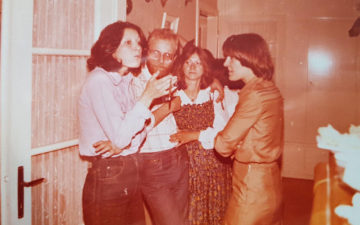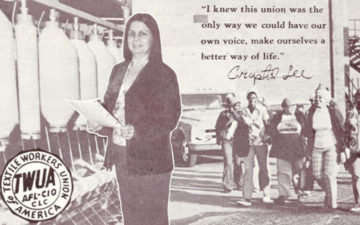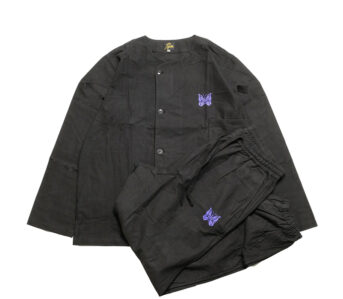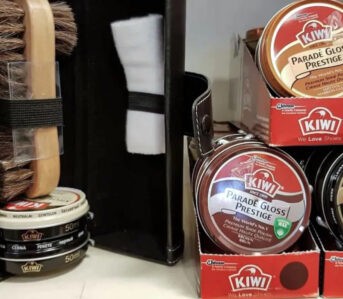It’s a cool autumn night at a roadside bar in Nevada. Your rental car is parked a quarter-mile down the highway—that flat tire can wait, it’s already dark outside. Inside the sheet-metal-clad establishment, an ancient television hangs above the bar where commercials announce the coming of “the big game.” The acridly sweet aroma of stale beer is overtaken by tobacco smoke as cigarette lighters flick open; the usual crowd is arriving. On one side of the oak-paneled room, a slot machine lights up like a fire engine as one pull of the handle sets off a cacophony of bells and sirens. Invariably, the result is followed by mumbled curses and empty coin pockets. The last quarter is spared this humiliation however and is instead dropped into the flickering jukebox. A steel guitar twangs a classic tune tempered by time.
Young and old, college hipsters and bowlegged cowboys—they all wear some variation of the Western shirt. Some of these shirts are made by high-end makers while others are just labeled “work” or “welding shirts” at the local farm supply store. Different styles of snap closures complete the look. The more “dressy” the shirt, the more ornate and unusual the snaps. However, history shows that snaps are as unfamiliar to Wild West lore as the high noon shootout. Where did they come from?
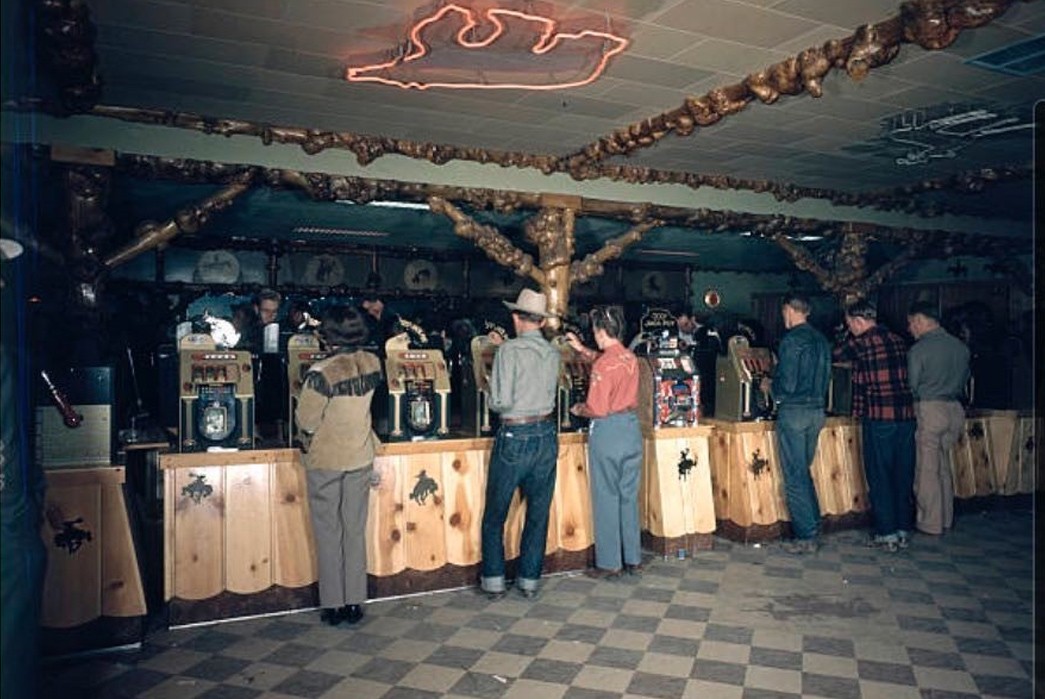
Interior of the Million Dollar Cowboy Bar in Jackson, Wyoming, circa 1948. Judging by the yoked Western shirts, I’d wager that there are snaps present. Image via Million Dollar Cowboy Bar.
What is a Snap Fastener?

A snap button via Wikipedia
To understand the origins, we need to examine what a snap is. Nothing speaks to modern industrial efficiency like patented closures for mass-produced clothing. In the spirit of electrical and pipe fittings, snaps are two-part: the “male” and “female” sides mate together to fasten. The female snap is usually outward-facing on garments. In terms of function, the female side acts like a small spring that flexes around the post on the male side, which then compresses to make the closure. That spring action provides the crisp snap that wearers know and love.
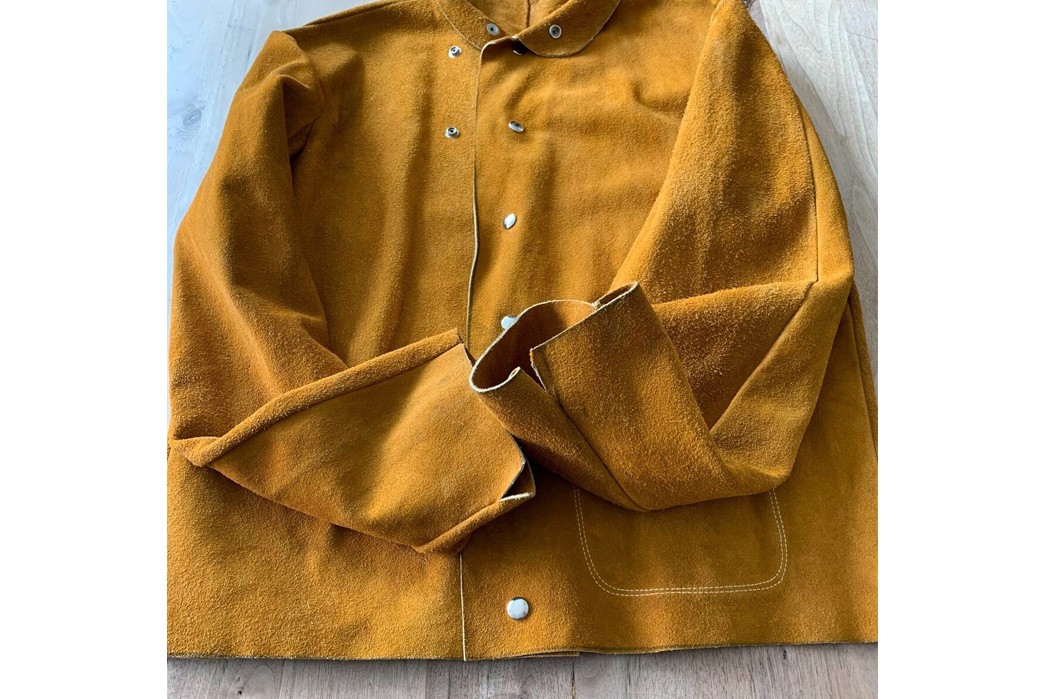
A suede welding jacket for sale on eBay. Leather prevented sparks from burning through to the wearer’s skin. Image via bubble_co/eBay.
The mechanical components are manufactured from thin sheet metal that’s pressed into shape. To install them, each half is riveted together. In its most basic form, the outward appearance is of a smooth dome but—not to be confined to just one shape—snaps have been made in a dizzying array of geometries, materials, and finishes.
History
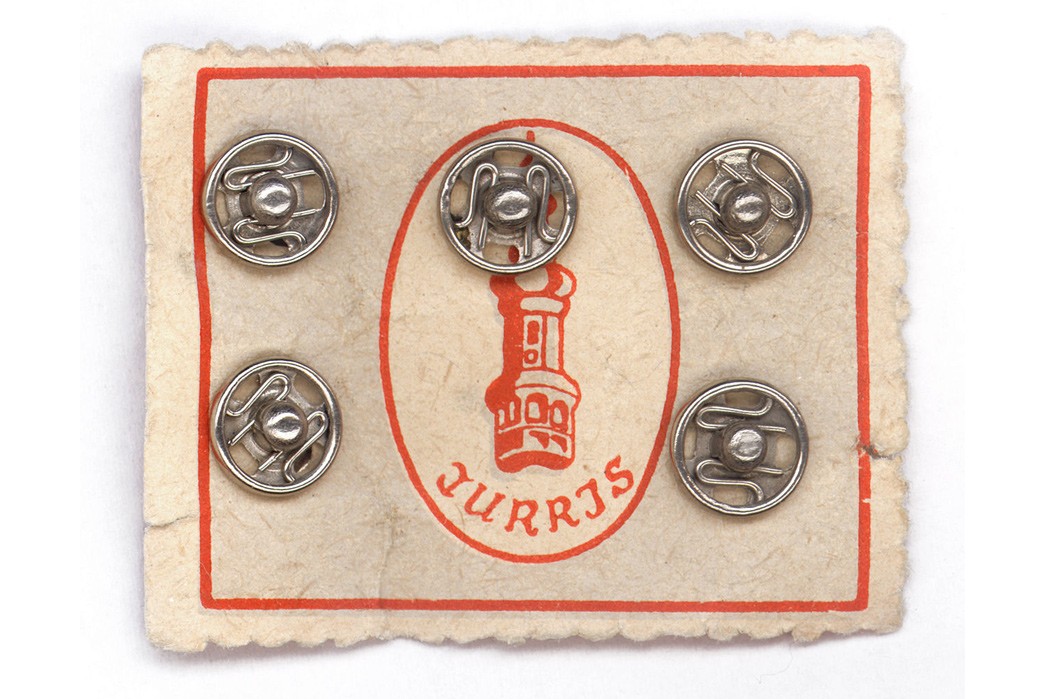
This 1960s-era Hungarian card of snaps showcases the S-shaped spring. Image via Takkk/Wikipedia.
Despite its relatively recent origins in Europe, metal snaps are synonymous with classic Western Wear and American Workwear. This unlikely association begins with Imperial Germany.
Blood and Iron (and Buttons)
Chancellor Otto von Bismarck declared during a speech in 1862 that Germany’s power would be derived through “iron and blood” (though it’s commonly poeticized “blood and iron”). Under his guidance, the country became an industrial, scientific, and military powerhouse that emerged from the turmoil of the 1840s. Just over twenty years after this speech, as German innovation hit its stride, Heribert Bauer patented the snap closure. Created as a novelty, it would have an impact on clothing and utilitarian equipment worldwide.
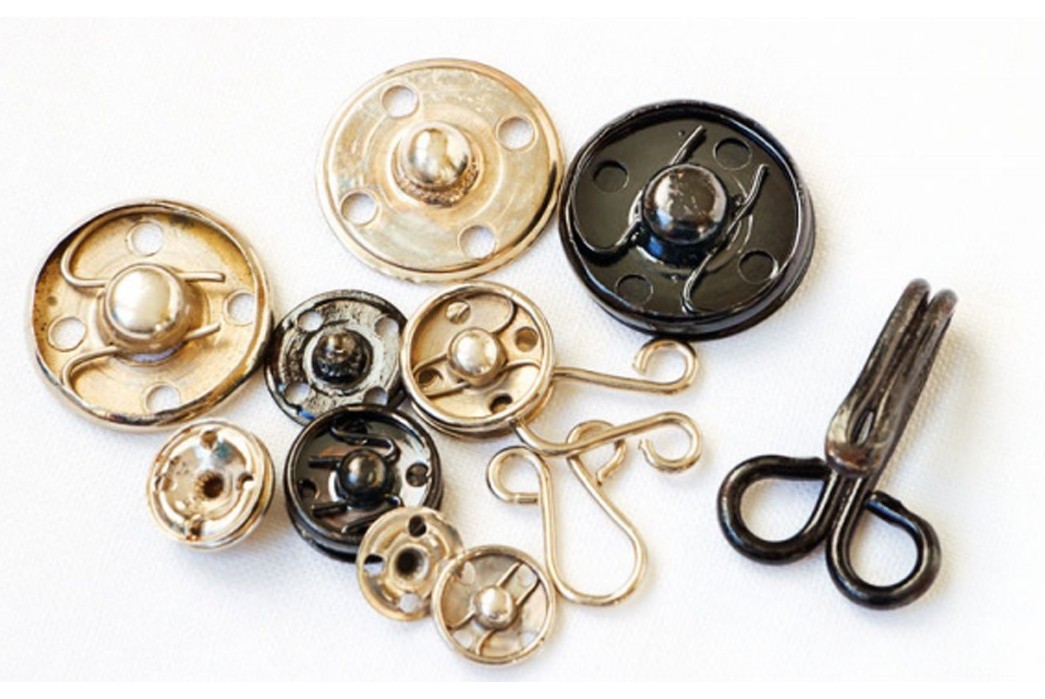
A selection of antique snaps and spare parts. Image via Bustle & Sew.
In typical German fashion, the new invention needed a name replete with syllables; federknopf-verschluss or “spring button closure” was selected. The original iteration featured an S-shaped spring rather than the divot that we see today. Bauer envisioned that his new spring buttons would be used for trousers.
As with every great invention, there are some “honorable mentions” to hand out. Bertel Sanders of Denmark has a competing claim to snap buttons. The Frenchman Albert-Pierre Raymond was also issued a similar patent the year after Bauer. An Australian woman named Myra Juliet Farrell later devised a “stitchless press stud“ so that clothing fasteners could be easily installed without sewing or mechanical tools—this was an effort to improve the earlier designs.
A New Century
Some inventions prove to be immediate hits—like Davis’ and Strauss’ rivet patent—while others emerge gradually. This seems to be the case for snap buttons. Germany’s second oldest family business, Prym (today William Prym GmbH), began producing an improved version of them in 1903.
Military arsenals also took note. For example, the U.S. was keen to upgrade its gear after the Spanish-American War. The government adopted a series of specifications that utilized snap button closures on webbing equipment. Everything from rifle cartridge belts to canteen covers featured embossed buttons known as “eagle snaps” among collectors. This style existed until 1917 when lift-the-dot (LTD) fasteners took over. Great Britain also adopted snaps for a lot of its gear before the First World War.
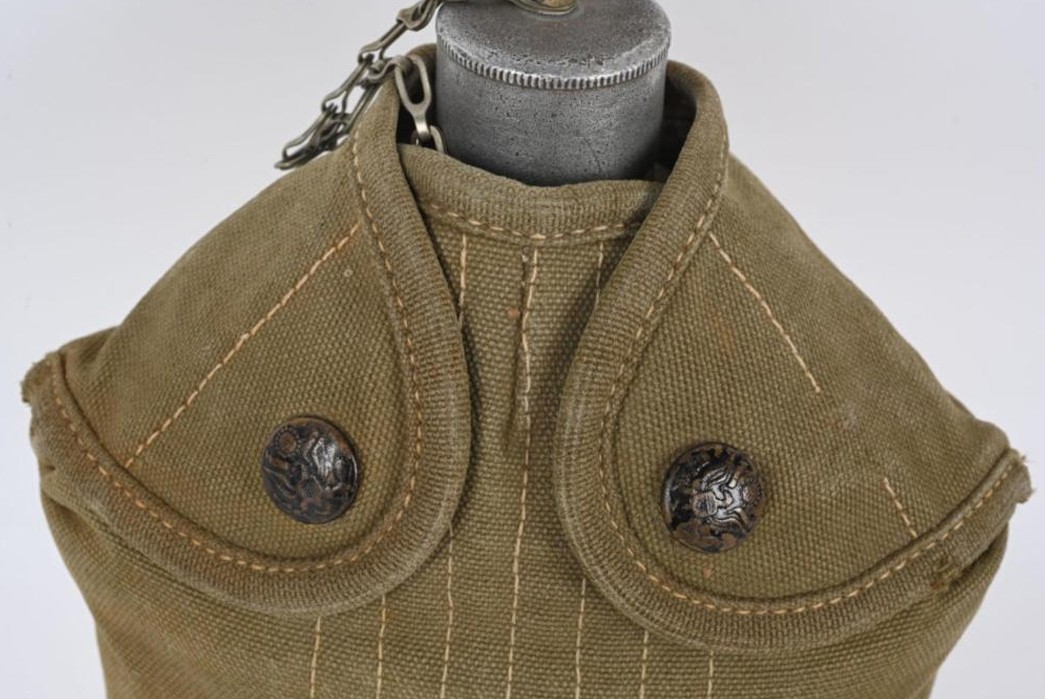
An eagle snap canteen cover produced for the U.S. government. Image via Invaluable.com.
If you can imagine all of the uses that Velcro has on modern accessories today, snaps performed many of the same jobs a century ago. By the 1940s, these mechanical buttons found their way into workwear and changed overalls as we know them.
Spring Closure for Safety… or Style?
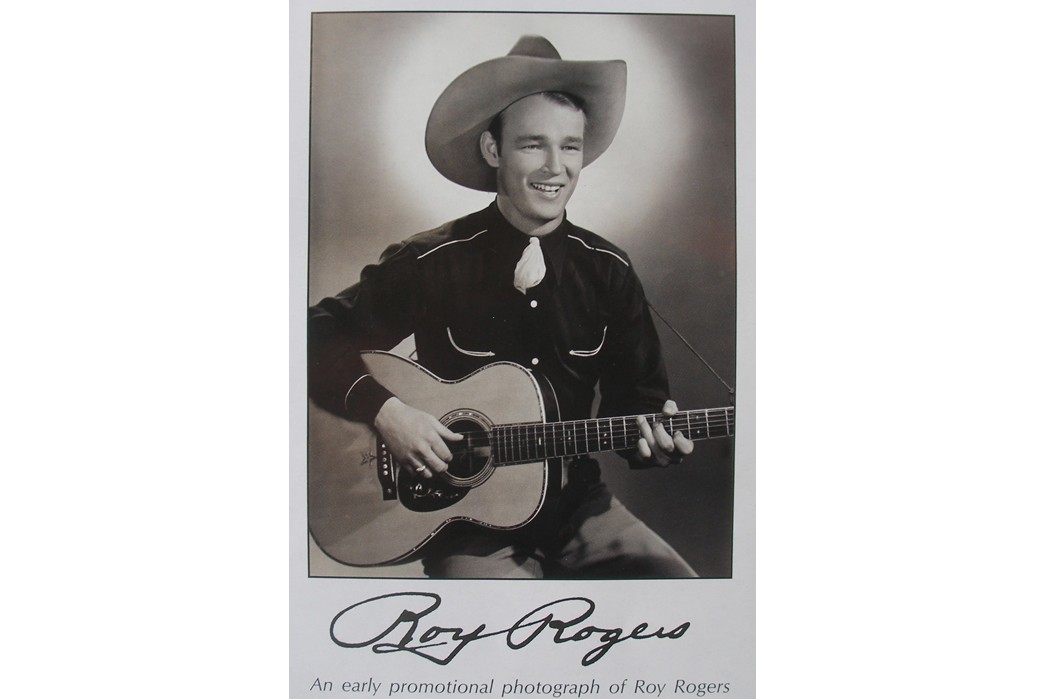
Roy Rogers’ classic look. Image via Rockmount Ranch Wear.
The last thing that you want when you’re riding a horse is to get your clothing snagged on a fence. There are some claims that snap fasteners first entered the Western wear world because of this reason. Whatever the case, Jack Weil is widely regarded as the first garment maker to put snaps on cowboy dress shirts. This is an important distinction to make because work shirts could already be found that had snaps on them, but they were rather plain compared to Weil’s artistry. To this end, Weil founded Rockmount Ranch Wear in 1946 and helped make Denver a hotspot for modern Americana. Among his other contributions are the bolo tie and the sawtooth pocket design.
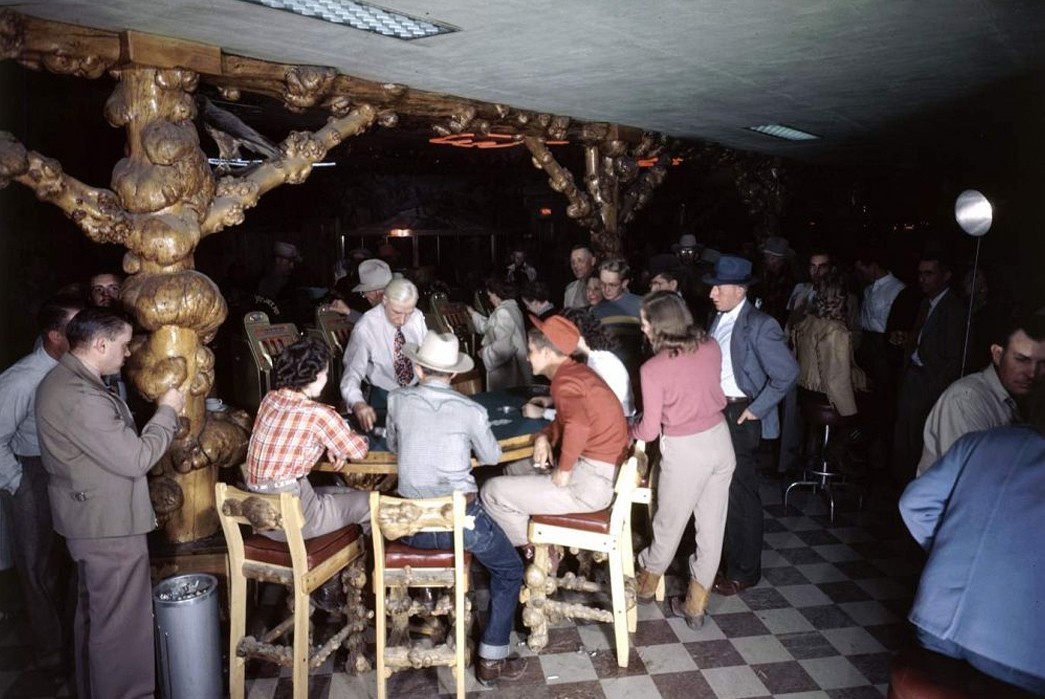
We return to the Million Dollar Cowboy bar for another killer image.
Hollywood took notice. The Golden Age of Television fostered a new chapter of cowboy clothing that was as distant from the Wild West as the first airplanes were from the Space Shuttle. Western wear took off in popular fashion—every family seems to have photos of their kids dressed up in ten-gallon hats and boots from this period.

Bryan Setzer, formerly of the Stray Cats, still pulls off the Western wear look. Image via Rolling Stone.
Nashville, the world’s country music capital, also took notice. Artists such as Roy Rogers (“The Singing Cowboy”) made snap shirts iconic of the era as faux pearl became the button of choice. This trend had such an enduring impact, that rockabilly groups of later years wore similar outfits as a tribute to their roots.
Modern Makers
The beauty of snaps is that they can be found on almost anything. Whether it’s a wallet, a shirt, or a break-away tracksuit, you are not without tactile snappy options for every facet of life.
Blackthorn Leather
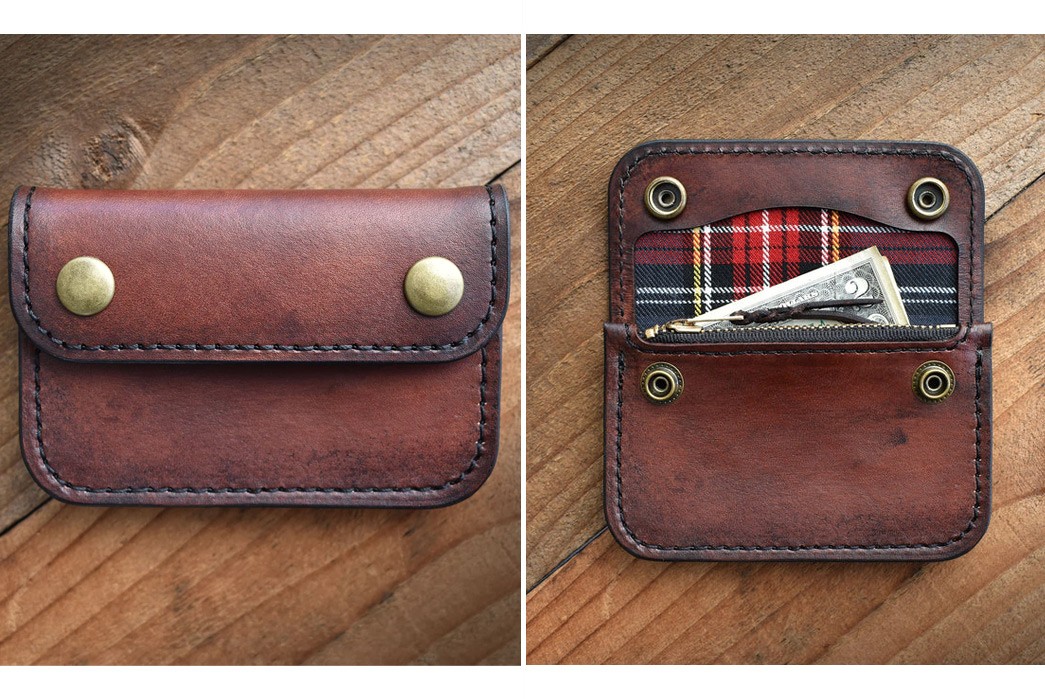
Snaps are commonly used on money wallets to keep your cash and cards secure. For a piece that harkens back to turn-of-the-century military equipment, this wallet form Blackthorn Leather delivers. Something about brass and russet leather evokes a sense of rugged mystique.
Available from Blackthorn Leather for $85.
Ginew
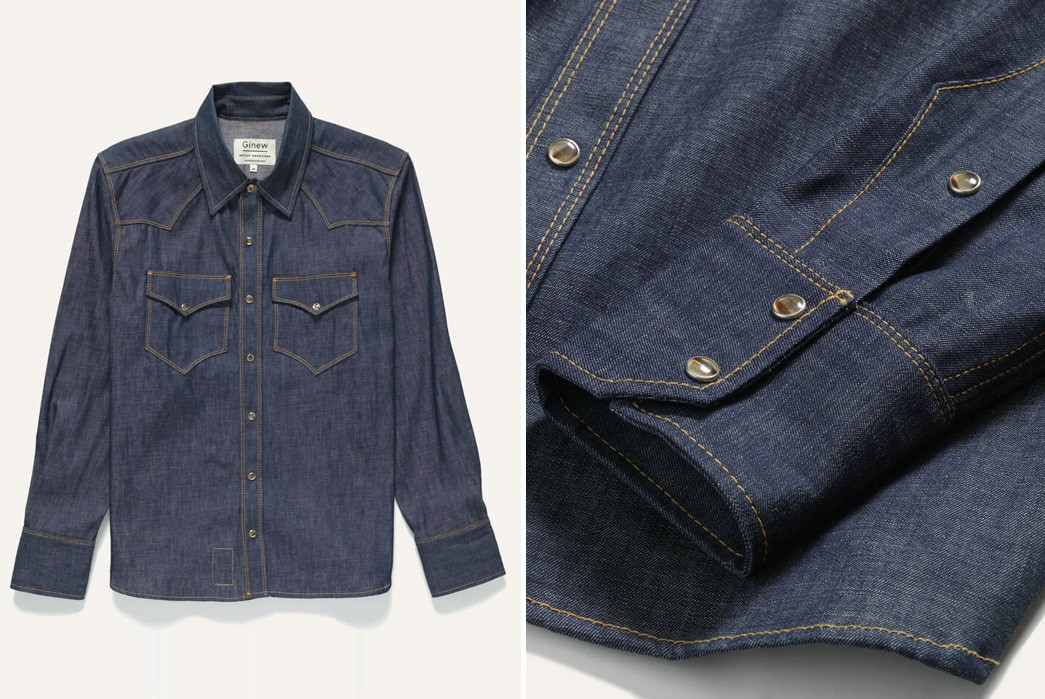
This shirt from venerable Native American denim label, Ginew, is a denim-lovers’ take on a Western Wear staple. Variegated pearl snaps go effortlessly with the deep indigo tones of the fabric to create something unique. Other details, like the timeless yoke, culminate in a shirt that’s nothing short of Americana.
The Western Snap Shirt Chambray is available from Ginew for $248.
Kluane Mountaineering
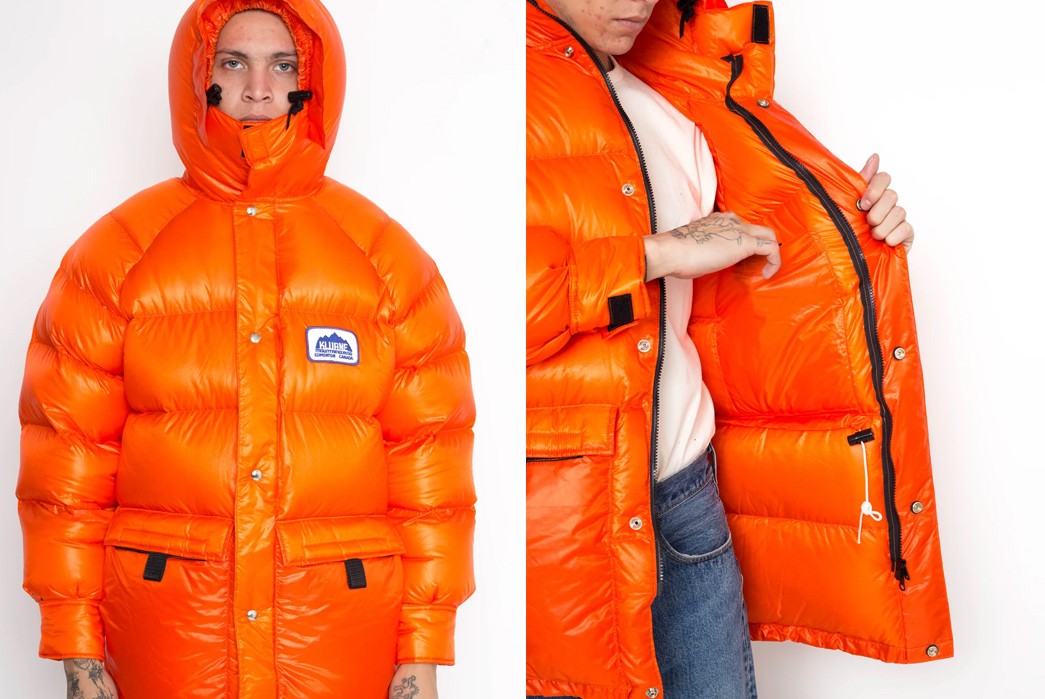
Eddie Bauer pioneered the use of snap buttons on his high-altitude combating outerwear back in the mid-20th century. Fumbling with buttons when you’re wearing gloves, or when your fingers are half-numbed is a frustrating exercise, so simple snapping fasteners were necessary.
And while Eddie Bauer isn’t anything like the outerwear titan it once was, brands like Kluane Mountaineering (who have their own history in the outdoor industry), are still making time-honored down-wear to this day. The white duck-down filling of this Snap Parka will keep you toasty even if it’s worn open — and when you want to close it up, those snaps will make life easy.
Available from Blue In Green for $1,780
Rockmount Ranch Wear
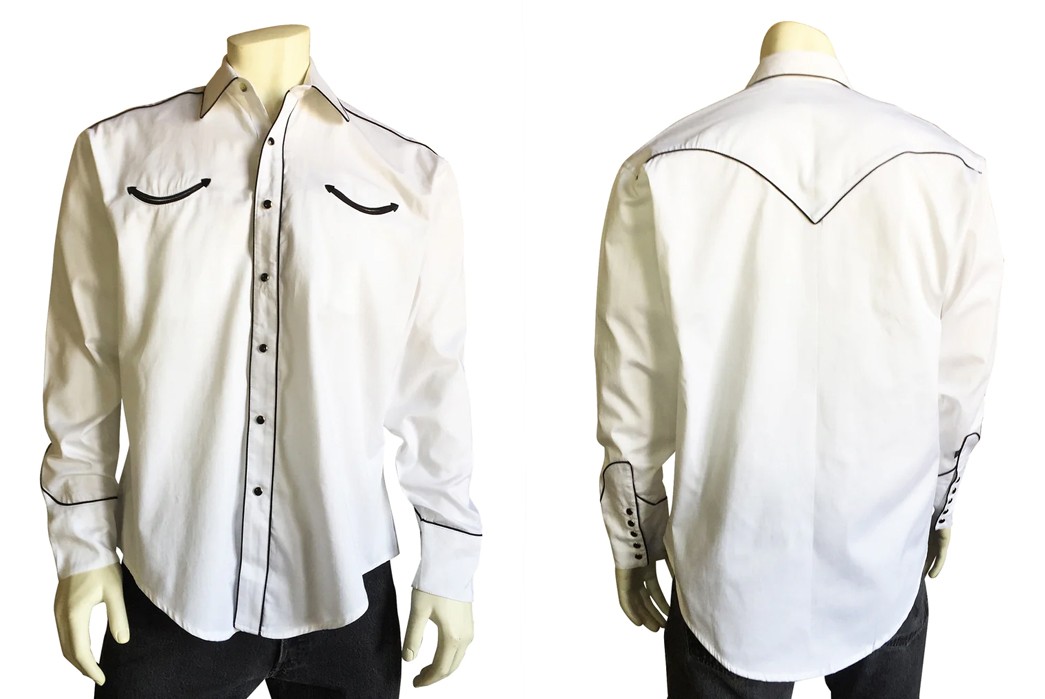
We wouldn’t be able to appreciate snaps without a true original. The next time you strum a guitar or get on the back of a mechanical bull, think of Rockmount. The durable cotton also makes an excellent work shirt in the Southwestern heat.
This blast from the 1940s can be bought from Rockmount for $90.
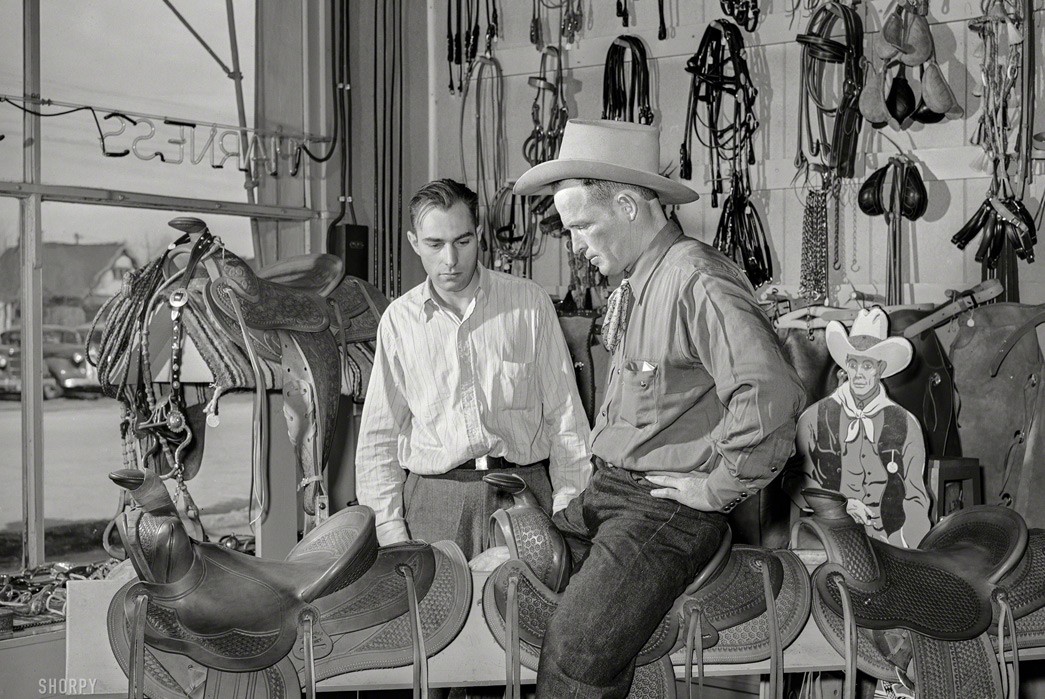
In 1940, Arthur Rothstein captured this cowboy trying on a saddle in Elko, Nevada. Open pockets reveal the use of snaps. Image via Shorpy.com.

